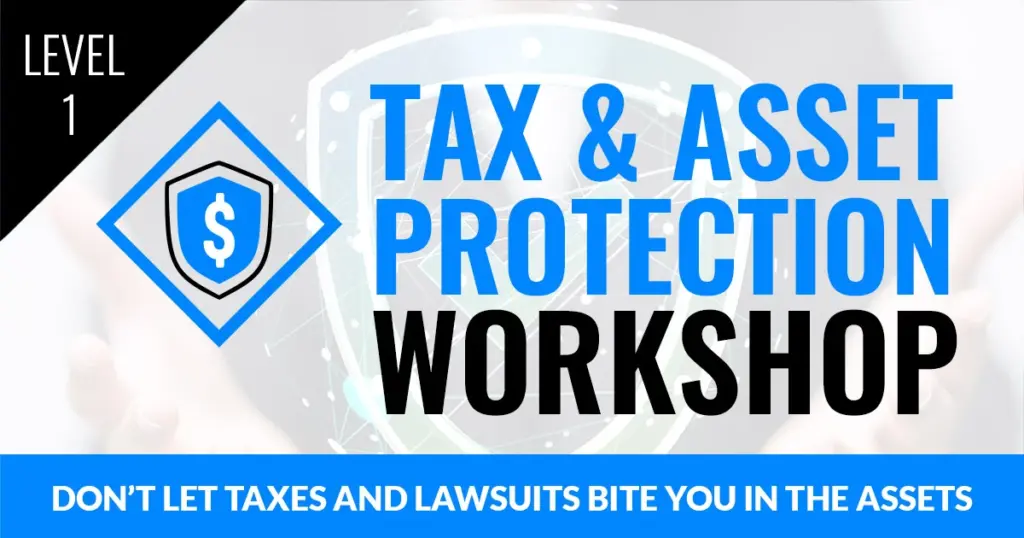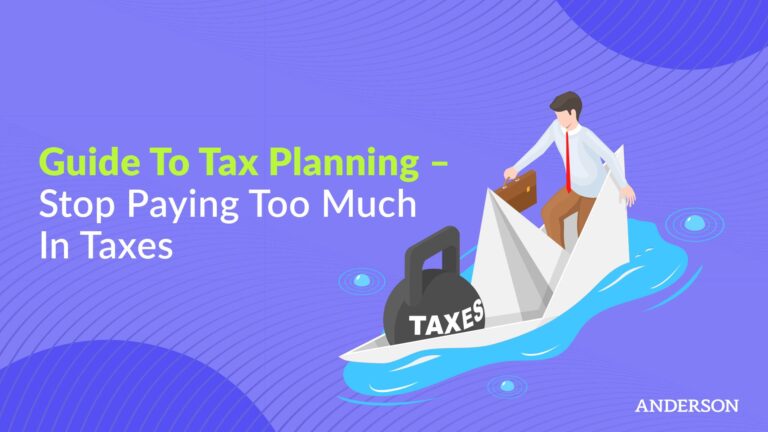Updated March 16, 2023
Paying taxes is no fun. Fortunately, there are many tax-free investment options available, each with their own unique set of benefits. Choosing the right investment strategy depends on your specific goals, values, and finances. Let’s look at some of the top tax-free and tax-deferred investments that let you keep the money you earn.
Owning Rental Property IS the New Retirement Plan – Learn how to own Real Estate in your Retirement Plan
Key Takeaways: Top 9 Tax-Free Investments
- 401(k)/403(b) Employer-Sponsored Retirement Plan: Offers long-term investment with pre-tax contributions and potential employer matching, often resulting in lower taxes during retirement.
- Traditional IRA/Roth IRA: Tax-free growth with income and contribution limits. Traditional IRAs use pre-tax money while Roth IRAs use after-tax money, offering tax-free withdrawals in retirement.
- Health Savings Account (HSA): Tax-deferred and tax-free earnings on eligible medical expenses. Contributions are pre-tax and tax deductible, with interest earned tax-deferred.
- Municipal Bonds: Generally safe investments backed by government entities, offering potential tax exemptions on federal, state, and city taxes depending on the bond and location.
- Tax-free Exchange Traded Funds (ETF): Low-cost, flexible investment options with tax benefits depending on the types of bonds held by the ETF.
- 529 Education Fund: Allows saving for education expenses with tax-deferred accumulation and potentially tax-free distributions for eligible education costs.
- U.S. Series I Savings Bond: Exempt from state and local taxes but subject to federal tax on interest income, with some qualified educational expenses tax-free depending on income limits.
- Charitable Donations/Gifting: Can provide tax deductions when itemizing taxes, potentially passing on capital gains tax through gifts of stocks to charities or dependents.
- 1031 Exchanges: Tax-free investing through real estate exchanges, deferring capital gains tax by reinvesting gains in replacement properties.
- Bonus: Indexed Universal Life Insurance: Offers a tax-efficient way to invest in a life insurance policy, providing a death benefit and tax-deferred cash value growth.
- Note: Before implementing any of these investment strategies, it’s crucial to analyze each option carefully and seek advice from a certified accountant or financial planner to ensure they align with your financial needs and goals.
Choosing the right tax-free investments depends on your current financial situation and retirement goals. It’s important to keep in mind that income levels will limit some of these investment options. Other investments may trigger AMT taxation. Each investment should be carefully analyzed and considered for your financial needs. You may benefit from the advice of a certified accountant or financial planner before implementing these potential investment strategies.
1. 401(k) / 403(b) Employer-Sponsored Retirement Plan
Employer-sponsored retirement plans offer great ways to invest for long-term periods. Your pre-tax contributions are deducted from your paycheck which lowers your adjusted gross income (AGI). Many companies will match your contributions up to a set amount and may even offer profit sharing plans. The earnings accrue tax-deferred and can be withdrawn after retirement when in a lower tax bracket. There are limited contribution amounts and penalties for withdrawing funds early.
You might also consider a Roth 401(k) which uses after-tax money for contributions but offers tax-free growth and tax-free withdrawals in retirement. Although contribution limits are spread between a 401(k) and Roth 401 (k), you can contribute to both if desired. A diversified retirement portfolio will provide more withdrawal options and benefits.
Employees of nonprofit companies may have access to a 403(b) retirement plan instead of a 401(k). Both use pre-tax dollars and grow tax-deferred; however, the nonprofit employer may not offer matching contributions. Generally, a 403(b) has lower administration costs associated as well. These employer-sponsored retirement plans are excellent ways to invest tax-free and should be one of the first methods considered, especially if price matching is available from the employer.
2. Traditional IRA / Roth IRA
An Individual Retirement Account (IRA) should also be considered for tax-conscious investors as these plans offer tax-free growth. Both traditional and Roth IRAs allow annual contributions up to $5,500 (under 50) and $6,500 (over 50). However, income limits and company retirement plans can impact eligibility and the deductions available. High-income earners can still utilize the benefits of these options with a little more work. Traditional IRAs allow pre-tax money to be invested tax-free and withdrawn in a lower tax rate at retirement. However, traditional IRAs also come with drawbacks such as mandatory disbursements after a certain age and other issues.
In contrast, a Roth IRA uses after-tax money and is tax-free at retirement but has income eligibility requirements. High-income earners may not be able to invest directly into a Roth IRA. This can be circumvented by first investing in a traditional IRA and then converting to a Roth IRA. Before considering this method, there are tax implications to consider, especially if you already have an IRA. Consult with a financial advisor today if you have any questions about IRA investments.
3. Health Savings Account (HSA)
Tax-conscious investors can also utilize a Health Savings Account (HSA) to invest in tax-deferred and tax-free earnings on eligible spending. In addition to decreased medical costs for upfront spending and saving for medical expenses, a health savings account offers tax benefits as well. Pre-tax contributions can be tax deductible, and interest earned is tax-deferred. Money will grow until it is used and does not expire. When utilizing an HSA for eligible medical expenses, withdrawals can be tax-free. You can also consider additional HSA accounts for family members or a family HSA plan but beware of annual contribution limits. Also, HSA accounts are limited to high-deductible insurance plan holders. Current healthcare spending trends seem to favor high-deductible plans. Insurance companies and employers are also keen to pass on more costs to plan holders in order to ensure responsible health care spending. Investing in an HSA account offers many tax and healthcare spending advantages, making high-deductible healthcare plans more attractive, especially if your employer offers matching contributions.
The great thing about HSA accounts is if you don’t use them, you can roll them over into retirement and use them to pay for health care expenses incurred in old age. This can be very beneficial when combined with programs such as Medicare. What is Medicare? It’s the federal health insurance program for people aged 65 and up.
4. Municipal Bonds
Called a “muni” for short, a municipal bond is issued by a state, city or county to finance spending. Since these bonds are backed by government entities, they are generally safer, but typically offer a lower return. Municipal bonds are sometimes called triple tax-free bonds because some are exempt from federal, state, and city taxes depending on where you live. However, not every muni is exempt from taxes so consider your options carefully. In other cases, investing in municipal bonds may cause the Alternative Minimum Tax (AMT) to apply which can greatly impact your taxes. When considering investing in a bond, carefully research the returns and taxes associated to determine if the investment would be worth your time. These bonds do offer tax incentives for high tax bracket individuals, especially if issued by the city or state where you reside. However, in some cases, a taxable account may offer better after-tax returns than a municipal bond with tax-free returns. Before you automatically forgo taxable investments in lieu of tax-free options, ask a professional to make sure you are choosing smart investments.
5. Tax-Free Exchange Traded Funds
In the pursuit of tax-efficient investing, you should certainly consider exchange-traded funds (ETFs). ETFs usually have lower costs than mutual funds and offer more flexibility as well. The tax benefit depends on the types of bonds held by the ETF. For example, U.S. government bond ETFs may be free from local and state tax but are subject to federal tax. In contrast, municipal bond ETFs are possibly free from federal, state, and local taxes. There are many different ETFs available, and many providers or exchanges offer them. The best ETFs depend on your age, income level, retirement goals, risk, and other factors. Consult with a tax advisor to determine the best investments for your financial status and eligibility.
6. 529 Education Fund
Another investment to consider is a 529 education plan. This allows you to set money aside for school tuition and higher education. Contributions are after-tax and not deductible, but some accumulated tax is deferred. In addition, distributions for eligible college or higher education costs may be tax-free at the federal level but only tax-free in some states. Before starting a 529, you should consider the benefits based on your location and planned usage. Spending money on non-qualified expenses is subject to income tax, plus a penalty on earnings. Money invested into a 529 is not as liquid as other investments without facing those penalties. However, you can change the beneficiary of a 529 plan if the intended recipient decides not to go to college. For example, you can transfer the beneficiary to yourself or to another dependent if desired.
7. U.S. Series I Savings Bond
U.S. Series I savings bonds offer another investment option, albeit one that may not be as advantageous as other tax-free investment plans. While exempt from state and local taxes, you will be liable for federal tax on interest income. However, you or a qualified dependent may be able to pay for some educational expenses tax-free using these bonds, depending on income limits and other restrictions.
8. Charitable Donations
Charitable donations are another method of tax-free investing. You can gift stocks to a charity in order to pass on capital gains tax. A charitable donation can also provide tax deductions when itemizing your taxes. Research this method carefully as there are restrictions, time limits, and downsides. However, in some situations, especially for high-income earners, it may prove beneficial. Another option is to gift money to a dependent. Uniform Gift to Minors Act (UGMA) provides tax-free and lower tax bracket options for certain investments. It is important to note that these gift amounts have the potential to impact the child’s future financial aid eligibility. There are also complicated gift tax laws to consider. While this method may not be as tax efficient as other methods discussed, it bears further scrutiny.
9. 1031 Exchange
1031 exchanges are a form of tax-free investing which involve changing an investment without paying on the capital gains. Typically, this method is seen in real estate where one property investment is replaced by another and gains are reinvested. The capital gains tax may be deferred to later dates as there are no limits on the number of 1031 exchanges that can be made. However, there are limitations on which investments can be exchanged. There are also taxes due for amount differences between investments. Since there are many complications that can arise from this method, it is highly recommended that you seek expert financial advice before reinvesting. The Anderson Advisors Real Estate Tax Guide is a great source for general information on real estate taxes.
BONUS: Indexed Universal Life Insurance
One of the most flexible tax-free retirement strategies available today is Indexed Universal Life (IUL) insurance. When properly structured, IULs allow you to accumulate a cash value within a life insurance policy. Tax-free loans can be taken throughout the life of the policy and repaid only if desired. IULs can supplement employer-sponsored retirement plans or IRAs or make a great alternative for small business owners who cannot contribute to a plan for employees. There are no funding limits, withdrawal requirements, or restrictions like a traditional requirement account. This plan does not only benefit high-income earners like some of the other options and can be set up at any age. For example, a parent can own a policy on a minor child which can provide a college funding option or future financial security for the child. In order to take advantage of these benefits, the IUL must be structured correctly. The financial professionals at Anderson Financial Services, LLC have years of experience structuring IULs for Anderson Advisors’ clients to meet their needs.
Uniform Gifts to Minors Act (UGMA)
The Uniform Gifts to Minors Act or UGMA was created to allow donors, such as parents or relatives, to set aside securities and cash for a child in a custodial account. These assets and the income they produce are considered the property of the child, but they cannot determine how those funds will be used. Instead, they are managed by the custodian. Unlike some retirement accounts, contributions to UGMA accounts use after-tax dollars or securities like stocks, exchange-traded funds, and bonds. Anyone can contribute towards a minor’s UGMA account and some contributions can be free of gift tax each year up to a given amount. Anyone who donates over their annual limits may deduct from their lifetime gift tax and estate tax exemptions.
An important concept to keep in mind is that these contributions are irrevocable. Taking advantage of certain tax law provisions require contributions to be considered irreversible. In most cases, the donor relinquishes the ability to withdraw the property. Unearned income, such as from capital gains, interest, and dividends, can be tax free to a given amount each year. However, the child or minor cannot access or determine how the money will be used until they reach the age of majority for the state where the UGMA account was created. Capital gains are realized when property is sold for a profit or loss. Capital gains taxes depend on how long an asset has been held before it was sold. Long-term capital gains have more favorable tax treatment, whereas short-term capital gains are taxed as income—which can push one into higher tax brackets.
UGMA accounts are custodial accounts where a parent, guardian, or appointed financial institution will manage the assets on behalf of the child until they come of age. This age of majority varies by state and can range from 18 to 21. At this point, the child can legally take control of the assets within the UGMA account and use them at his or her discretion for any purpose. This can be problematic in some situations, such as drug abuse, credit risks, or impaired judgment. Also, an asset in a UGMA account does not have the same kind of protections from creditors that other accounts might offer. Anyone thinking of using a UGMA account should carefully consider their other financial goals and the income tax bracket implications. In some cases, another tax-free investment vehicle (such as a type of income fund) may be a better option for net asset performance. For example, a 529 Education plan may be more advantageous, since it limits eligible expenses to college and other educational expenses, while UGMA accounts can diminish a minor’s eligibility for financial aid.
To exert even more control on how funds are disbursed to beneficiaries, you may want to consider a trust. A family or dynasty trust can exist for generations and operate under strict conditions set by the grantor or creator. Furthermore, many states have enacted the expanded Uniform Transfers to Minors Act (UTMA), which offers more benefits over what the UGMA offers. Consider seeking the advice of a knowledgeable and experienced tax professional who can determine the most efficient way to take advantage of tax laws in your unique situation. The experts at Anderson Advisors can also help in a variety of other areas, such as drafting an LLC Operating Agreement.
Uniform Transfers to Minors Act (UTMA)
Many states have adopted the Uniform Transfers to Minors Act or UTMA. This update to the older Uniform Gifts to Minors Act was proposed by the National Conference of Commissioners on Uniform State Laws, also known as the Uniform Law Commission in the 1980s. These laws allow for the creation of a custodial account similar to the UGMA but these allowable assets have a much greater range. Instead of just cash and securities, donors could transfer any tangible property to a UTMA account like real estate or different fixed-income investments, as well as intangible property like patents and royalties. UTMA and UGMA accounts are often used interchangeably but they do have distinct differences. Most states have adopted UTMA provisions with increased freedom of choice, except for South Carolina and Vermont. However, South Carolina is currently considering legislation to adopt UTMA.
Contributions are irrevocable and will generally become accessible when the minor turns 21. There is a provision where if the minor does not request ownership within 30 days of their birthday to the age of majority, then control stays with the custodian until the beneficiary turns 25. A Uniform Transfers to Minors Act (UTMA) account offers an alternative to other methods (such as a tax-free income fund, mutual fund, or fixed-income securities) of investing for your child’s future. You can take advantage of the 2019 gift tax annual exclusion of $15,000, $30,000 for married couples filing jointly. Recent changes to income tax laws (Tax Cuts and Jobs Act of 2017) have improved the tax treatment of UGMA and UTMA accounts.
UGMA vs. UTMA – Which Account is Right for Me?
There are many differences between the Uniform Gifts to Minors Act (UGMA) and Uniform Transfers to Minors Act (UTMA). UGMA came first but was limited in scope. UTMA was developed later and adopted by most states. Key differences between the two accounts focus on the type of asset that can be contributed and at what age the funds become accessible to the beneficiary. UGMA and UTMA are smart after-tax investments in specific circumstances and have no IRS penalty for withdrawing funds.
You may be wondering how investments are taxed in a UTMA or UGMA account. Any profits or income realized is reported on the beneficiary’s tax return, which typically offers lower tax rates. Amounts over a certain threshold may be taxed as trusts. In some situations, the custodian may report the account on their tax return. Unlike UGMA accounts, UTMA accounts can include real estate and insurance policies, while giving the custodians more powers to buy and sell assets in order to boost performance or make withdrawals for the benefit of the minor. Consider your investment objectives and the benefits of other options for tax free investments, such as tax-free income funds, money markets, or municipal bonds offered by local governments. There are certain tax penalties that a financial professional can help you reduce or avoid. A professional advisor can also offer services for business owners and real estate investors, such as structuring a business or helping you update articles of your organization.
Before deciding to fund a UGMA or UTMA account, it is important to consider your financial goals and decide what you want to accomplish for your child with this account. There may be a better option that provides pre-tax, tax-free, or tax-deferred benefits. Typically, a UTMA has better performance than a UGMA and is offered by most states. Contributions to either account are irrevocable and cannot be changed. Legally, the property is no longer yours but belongs to the child. Assets can be used for the benefit of the child in the form of a predefined range of eligible expenses. While withdrawals are not taxed, in some cases, any unearned income will be taxed at the child’s income bracket. These accounts can be easier to open and manage compared to other options like a trust, which often requires professional assistance to set up. UGMA/UTMA accounts count as assets towards financial aid which can adversely affect financial aid considerations. As well, the issue of large amounts of money becoming available to a minor reaching the age of majority sparks concerns of responsibility and maturity. Reach out to a professional tax advisor to find out which account is right for your family.
Finding the Right Tax-Free Investments
Tax-free investments can minimize your tax liability and let you keep more of the money you earn. Financial investing carries both risks and rewards, and it’s important to determine the best or most efficient investing strategy for your specific needs. If you are considering tax-free investing, be sure to research your options carefully or speak to a tax professional. There are many tax-free investment options available to investors that use proper tax planning strategies. Some of these options provide better benefits and more comprehensive tax advantages than others. Start with the best options, such as your employer’s 401(k) or 403 (b) retirement plans, or an IRA/Roth IRA. You can also invest money tax-free through an HSA account or by buying tax-free municipal bonds. Another option is investing in tax-free ETFs. In some cases, it may be worthwhile to consider a 529 education plan for yourself or qualified dependent. Also, U.S. Series I savings bonds, charitable donations, and 1031 exchanges all provide some form of tax incentive. Be sure to consider the alternative minimum tax (AMT) which can impact your taxes greatly, if applicable.
When pursuing investments with tax advantages, it’s best to find the optimal mix of investments that provide the highest tax advantages with the lowest disadvantages. Due to the complexity of taxes and related laws, it can be difficult to research and file correctly. A financial tax expert with experience in tax-free investments can help you choose the most effective strategy to achieve your goals and protect your family wealth. Reach out to Anderson Advisors today to learn which tax-free investments are best for you.
To hear what others have to say about working with Anderson, click here to check out our reviews.
 The greatest mistake that people make when it comes to asset protection for real estate is not understanding the risks that are waiting out there for them. This eBook reveals the structure you should follow to ensure your hard earned money is protected from frivolous lawsuits and costly tax mistakes.
The greatest mistake that people make when it comes to asset protection for real estate is not understanding the risks that are waiting out there for them. This eBook reveals the structure you should follow to ensure your hard earned money is protected from frivolous lawsuits and costly tax mistakes.















